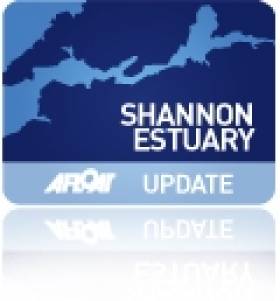Displaying items by tag: Shan Estuary
Large-Sized Energy Project Vessels Dock in Foynes Port
#FoynesPort - Shannon Estuary with its enormous investment potential and capability in handling large vessels due to deep-water channels, was clearly evident with the call last month to Foynes Port of the giant 55,000 tonne Santa Fe.
The 200m long ship was carrying one of the largest ever cargo of wind turbines to come into Ireland and had arrived in Foynes from China. On completion of unloading the wind turbine installations for onward road transportation along the western seaboard, Santa Fee departed for Rotterdam.
As previously reported on Afloat.ie, Shannon Foynes Port Company (SPFC) also handled the 82,000dwt London 2012 earlier this year.
The dry-bulk-carrier discharged cargo at the Aughinish Alumina jetty which is one of six terminals of the SFPC that published its Vision 2041 Masterplan to attract international investors to establish manufacturing and potentially transshipment operations on the estuary.
SFPC is the only Irish port authority with sufficient natural water depths to accommodate the global trend for a doubling and more of in the size of vessels (up to 80,000 tonnes) over the coming decade or more.
This is due to the enlargement of the Panama Canal - the world's most important shipping route, which influences vessel sizes globally.
As well as handling the Santa Fe, the SFPC hosted the first visit of the Polarcus Amani on the last day of July. The ultra-modern, super high ice class, 12-14 streamer 3D/4D seismic research vessel involved in operations off the west coast of Ireland.
Polarcus Amani berthed to change crew and receive gas oil bunkers. Inver Energy Ltd supplied the 600 tonnes of fuel directly by pipeline from the new Atlantic Fuel Supply Company terminal located in Foynes.
SFPC expects to host considerably more activity in the coming years to service the planned exploration of potential gas and oil fields located off the western seaboard. Offshore supply bases have previously operated out of Foynes.




























































